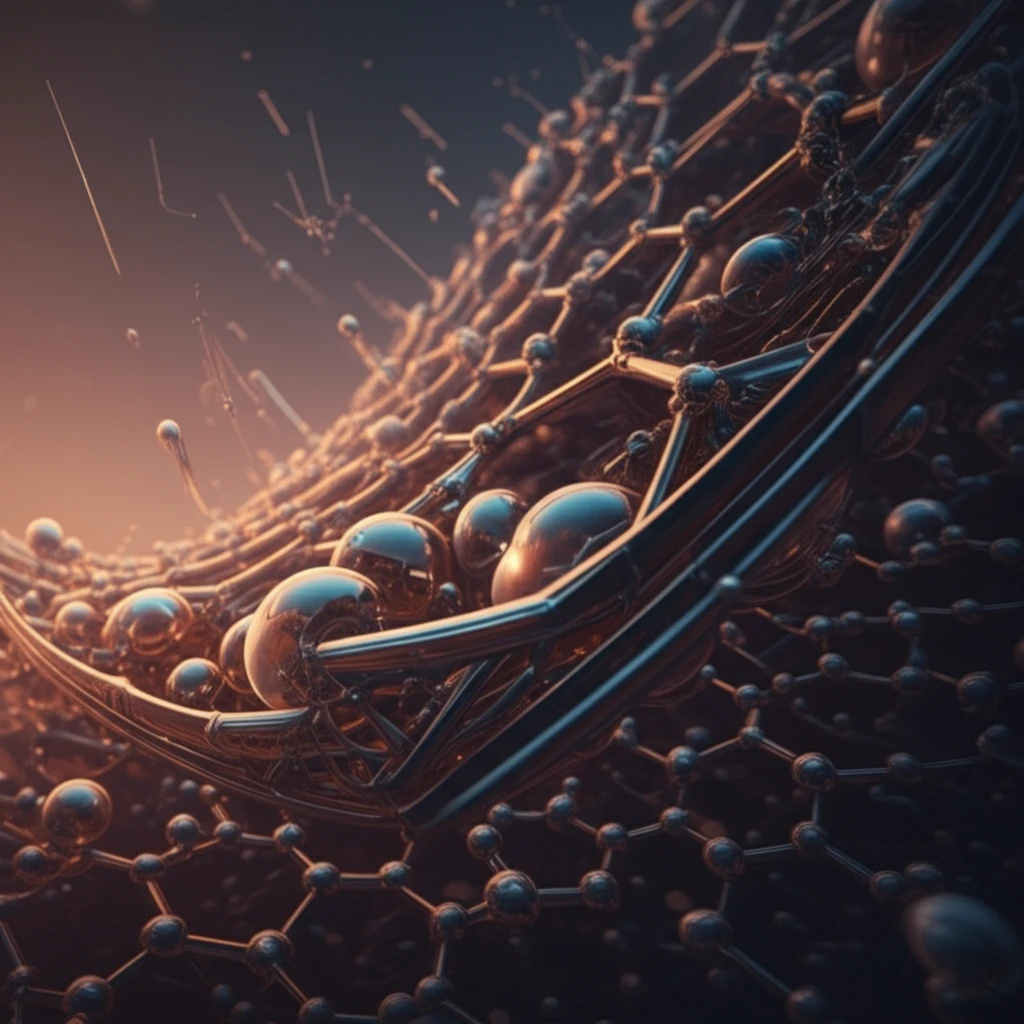
Graphene-Reinforced Composites: The Future of Stronger, Lighter Materials?
"Explore how graphene is revolutionizing material science, enhancing the mechanical and tribological properties of TiAl matrix composites for aerospace and beyond."
In the quest for materials that are both incredibly strong and remarkably light, scientists and engineers are increasingly turning to innovative composite materials. Among these, graphene-reinforced composites are emerging as a game-changer, promising to revolutionize industries from aerospace to automotive. Graphene, a one-atom-thick layer of carbon atoms arranged in a hexagonal lattice, boasts exceptional mechanical properties, making it an ideal candidate for reinforcing various materials.
Traditional self-lubricating composites often rely on fillers like silver, molybdenum disulfide (MoS2), or graphite to enhance their tribological properties—that is, their friction and wear performance. While these fillers do reduce friction, they often come at the cost of the material's overall strength. This trade-off has spurred the search for new materials that can offer both superior mechanical strength and excellent tribological behavior. Graphene is stepping up to take the lead.
Recent research published in Tribology Transactions explores the potential of graphene to enhance the mechanical and tribological properties of titanium aluminide (TiAl) matrix composites. The study, led by Bing Xue, Zengshi Xu, Yi Liu, and Weidong Ma, delves into how incorporating graphene into TiAl matrices can lead to significant improvements in microhardness, fracture toughness, and wear resistance. The findings suggest that graphene could be the key to unlocking a new generation of high-performance composite materials.
Why Graphene? Unpacking the Science Behind the Strength

Graphene's unique structure and properties make it an exceptional reinforcing agent. Its high Young's modulus (a measure of stiffness), high fracture strength, and ultralow friction coefficient are ideal for creating composites that can withstand extreme conditions. Unlike traditional fillers, graphene can enhance both the mechanical and tribological properties of a composite material.
- Microhardness: The addition of 3 wt% graphene increased microhardness by 129%.
- Fracture Toughness: The addition of 3 wt% graphene increased fracture toughness by 149%.
- Friction Coefficient: The addition of 3 wt% graphene decreased the friction coefficient by 37%.
- Wear Rate: The addition of 3 wt% graphene decreased the wear rate by 78%.
The Future of Graphene Composites: Applications and Outlook
The Tribology Transactions study provides valuable insights into the potential of graphene-reinforced TiAl matrix composites. While further research is needed to optimize the composition and manufacturing processes of these materials, the initial findings are promising. In the future, we can expect to see graphene composites used in a wide range of applications, including aerospace components, automotive parts, and cutting-edge electronics. As technology advances, the partnership between graphene and other materials will continue to drive innovation and create a new generation of high-performance materials.
